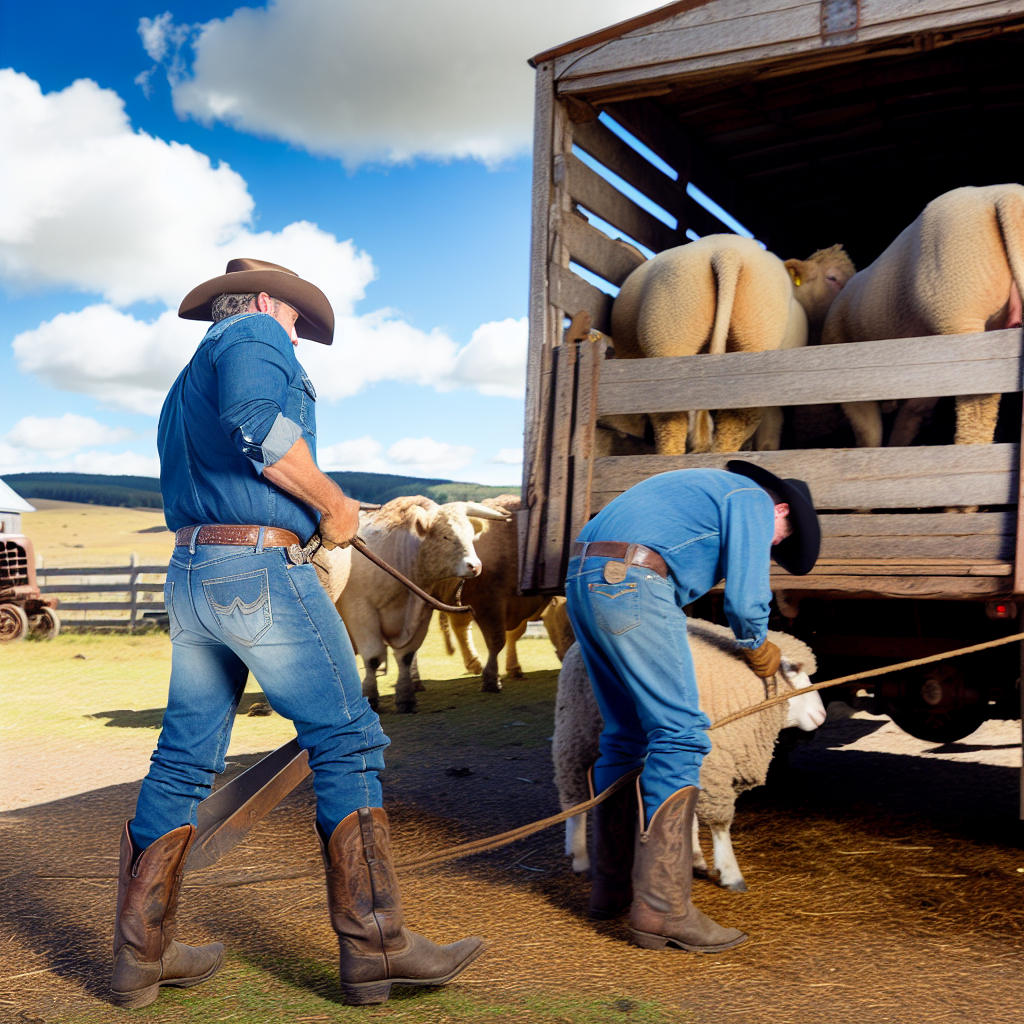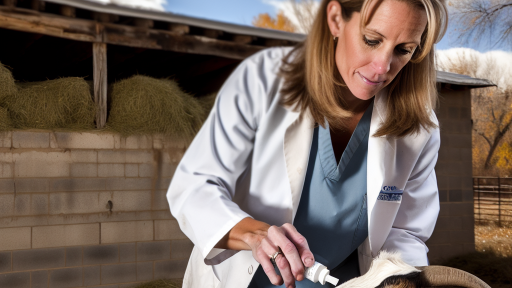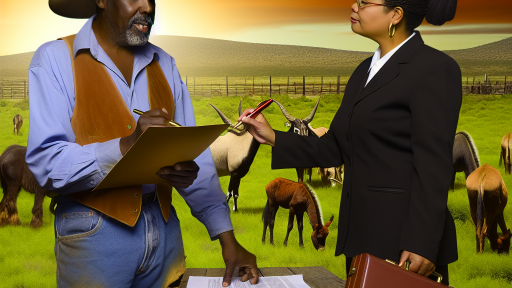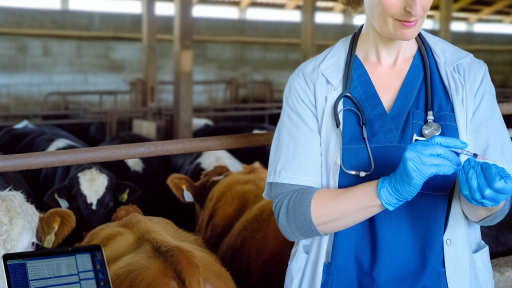Understanding the Importance of Proper Loading Techniques for Livestock
Enhancing Animal Welfare
Proper loading techniques significantly enhance animal welfare during transport.
Safe loading reduces stress and anxiety for livestock.
Consequently, healthier animals arrive at their destinations.
Complying with Regulations
Loading livestock correctly ensures compliance with legal regulations.
Many countries have strict laws governing animal transportation.
Adhering to these laws protects operators from penalties.
Ensuring Safety for All
Proper techniques promote safety for both animals and humans.
Accidental injuries can arise from improper loading practices.
Following established methods minimizes risks during transport.
Maintaining Efficiency
Efficient loading techniques optimize time and resources.
Quick and organized loading reduces downtime for transporters.
This efficiency can lead to lower operational costs overall.
Building Trust with Clients
Demonstrating skilled loading builds trust with clients and partners.
Clients appreciate reliable and humane handling of their livestock.
Trust fosters long-term business relationships in the industry.
Transform Your Agribusiness
Unlock your farm's potential with expert advice tailored to your needs. Get actionable steps that drive real results.
Get StartedPreparing the Vehicle
Choosing the Right Type and Size for Different Livestock
Selecting the appropriate vehicle is crucial for transporting livestock.
Different types of livestock require different vehicle specifications.
Start by considering the size of the animals you will transport.
Large animals such as cattle need spacious and sturdy vehicles.
Smaller animals like sheep or goats can fit in smaller, more compact trucks.
For example, a standard livestock trailer works well for sheep and pigs.
Next, assess the weight capacity of the vehicle.
Ensure the vehicle can support the combined weight of the livestock.
Overloading can lead to dangerous situations on the road.
Furthermore, consider the type of flooring in the vehicle.
Non-slip surfaces help prevent injuries during transit.
Another essential factor is ventilation in the vehicle.
Proper airflow keeps animals comfortable during transport.
Excess heat or humidity can stress livestock and affect health.
Finally, check for secure fastening options within the vehicle.
Properly securing the animals prevents movement and ensures safety.
Choosing the right vehicle maximizes safety and comfort for livestock.
Take the time to evaluate each consideration for the best outcomes.
Safety Equipment: Ensuring Compliance with Regulations and Best Practices
Importance of Safety Equipment
Safety equipment plays a crucial role in livestock vehicle operations.
It protects both animals and handlers during loading and transport.
Compliance with safety regulations is essential for legal operation.
Therefore, using the right safety gear minimizes accident risks.
Types of Safety Equipment
Several key types of safety equipment are necessary for effective operations.
- Protective gear such as gloves, boots, and helmets.
- Headlamps or flashlights for visibility in low-light conditions.
- Restraint equipment to secure animals safely.
- First aid kits readily accessible in the vehicle.
Compliance with Regulations
Compliance with safety regulations is a legal requirement for all operators.
Showcase Your Farming Business
Publish your professional farming services profile on our blog for a one-time fee of $200 and reach a dedicated audience of farmers and agribusiness owners.
Publish Your ProfileRegular training on safety protocols helps ensure adherence to regulations.
Moreover, keeping up with changes in laws is vital for compliance.
Inspections should occur frequently to verify safety equipment is up to standard.
Best Practices for Safety
Establishing best practices enhances safety for everyone involved.
Regularly inspect and maintain all safety equipment.
In addition, provide training on proper equipment usage.
Communication among team members also reduces the chance of accidents.
Finally, always prioritize welfare during loading and unloading processes.
Uncover the Details: Genetic Selection Techniques for Livestock Management
Techniques for Gently Handling Livestock During the Loading Process
Create a Calm Environment
A quiet setting reduces stress for the livestock.
Remove loud noises and sudden movements.
Dim the lights to create a more soothing atmosphere.
This helps prevent panic and chaos during loading.
Utilize Proper Equipment
Use non-slip loading ramps to ensure safety.
Choose sturdy panels to guide animals smoothly.
Ensure all equipment is in good working condition.
Inspect tools regularly for any damage.
Train Livestock for Loading
Introduce animals to the loading area gradually.
Use positive reinforcement to encourage desired behavior.
Reward animals with treats to build trust.
Consistency is key for successful training.
Lead Animals Gently
Always move at the animal’s pace during loading.
Use gentle pressure, not pulling or pushing.
Keep a calm demeanor to reassure them.
Monitor Animal Behavior
Pay attention to signs of distress in livestock.
Recognize when an animal feels scared or anxious.
Respond quickly to any signs of stress.
Teamwork and Coordination
Ensure all team members understand their roles.
Communicate effectively during the loading process.
Use clear signals to coordinate movements.
Work together to create a smooth transition.
Maintain a Safe Distance
Keep a safe distance from unfamiliar animals.
This prevents unnecessary stress for them.
Use barriers to separate handlers from livestock.
Delve into the Subject: Selecting the Right Sheep for Your Farm
Loading Order and Positioning: Maximizing Space and Minimizing Stress
Understanding Proper Loading Order
Proper loading order is vital for livestock vehicles.
It helps maximize available space during transport.
Prioritizing larger animals first can provide stability.
Additionally, loading animals by behavior can reduce stress.
Start with calm animals to create a peaceful environment.
Showcase Your Farming Business
Publish your professional farming services profile on our blog for a one-time fee of $200 and reach a dedicated audience of farmers and agribusiness owners.
Publish Your ProfileEffective Positioning Techniques
Positioning of animals greatly impacts their comfort.
Use a mix of sizes to balance weight distribution.
Place heavier animals towards the front of the vehicle.
This minimizes the risk of tipping during movement.
Minimizing Stress During Loading
Stress affects animal health and transport efficiency.
Approach animals calmly to facilitate easier loading.
Using familiar equipment can reduce anxiety levels.
Keep the loading area clean and well-lit for safety.
Creating an Efficient Loading Plan
Planning the loading process enhances organization.
Lay out a clear system to follow each time.
Use signage for guiding individuals involved in loading.
Training staff on proper techniques reduces mistakes.
Monitoring Animal Behavior
Observation of animal behavior provides valuable insights.
Identifying signs of stress can prevent issues during transport.
Implementing calming techniques can improve overall experience.
Consider using calming scents or music to ease anxiety.
Utilizing Space Efficiently
Maximizing space is crucial in livestock transportation.
Avoid overcrowding to ensure adequate ventilation.
Implement barriers to separate different species if necessary.
Maintain enough room for each animal to stand comfortably.
Delve into the Subject: Best Practices for Breeding Fish in Aquaculture Systems

Monitoring Livestock Behavior
Recognizing Signs of Stress
Recognizing signs of stress in livestock is crucial for their well-being.
Changes in behavior often signal that animals are experiencing stress.
Avoidance behavior can indicate discomfort or anxiety among livestock.
Watch for pacing or repeated movements inside the vehicle.
Vocalizations can also reflect stress levels in animals.
Excessive vocalizations may indicate distress or discomfort.
Isolation from the group is another sign of stress.
Animals may separate themselves when feeling stressed.
Observe for signs of hesitation or reluctance to enter the vehicle.
This behavior can signify anxiety about the loading process.
Identifying Signs of Anxiety
Understanding anxiety indicators helps in monitoring livestock health.
Look for excessive licking or chewing as a sign of anxiety.
Increased heart rates can also indicate anxious animals.
Check for heavy breathing or other respiratory changes.
Restlessness can result from anxiety during transport.
Animals may try to escape or find comfort in familiar surroundings.
Additionally, observe their eating habits.
A loss of appetite often correlates with stress or anxiety.
Inspect for any defensive postures in response to perceived threats.
Showcase Your Farming Business
Publish your professional farming services profile on our blog for a one-time fee of $200 and reach a dedicated audience of farmers and agribusiness owners.
Publish Your ProfileSuch postures can indicate fear or heightened anxiety levels.
Creating a Calm Environment
A calm environment promotes better behavior during loading.
Ensure the loading area is familiar and free of distractions.
Use low light levels to reduce stress on the animals.
Maintain a steady pace during loading to minimize anxiety.
Utilizing positive reinforcement can help ease anxiety.
Rewards can encourage desired behaviors and reduce stress.
Establishing a routine can aid in creating a sense of security.
Animals thrive in a predictable environment during transport.
Regular observations allow you to gauge the effectiveness of these techniques.
Adjustments may be necessary based on the specific needs of the livestock.
Learn More: Common Challenges in Exotic Livestock Management
Best Practices for Securing Animals During Transit to Prevent Injury
Understanding the Importance of Animal Safety
Animal safety during transit is a crucial concern for any livestock transporter.
Injury during transportation can lead to severe consequences for the animals.
Additionally, it can affect overall productivity and profitability for farmers.
Selecting the Right Vehicle
Choosing the proper vehicle is the first step in ensuring animal safety.
Vehicles must provide sufficient space for animals to stand and lie down comfortably.
Moreover, the flooring should have good traction to prevent slipping.
Preparation Before Loading
Preparation can significantly improve the loading process.
Prior to loading, inspect the vehicle for any potential hazards.
Ensure that all doors and gates operate smoothly to ease loading.
Additionally, keep the loading area calm to minimize animal stress.
Techniques for Loading Animals
Using gentle techniques during loading helps to reduce anxiety in animals.
Always approach animals calmly to avoid startling them.
Using handling tools, such as canes or panels, can guide animals safely.
Furthermore, consider using noise-reducing strategies to keep the environment tranquil.
Securing Animals Once Loaded
Once loaded, securing animals is vital to prevent injury during transit.
Use appropriate restraints that secure without causing discomfort or harm.
For larger animals, utilize harnesses or stalls specifically designed for safety.
Regularly check the restraints to ensure they remain secure throughout the journey.
Monitoring During Transit
Monitoring animals during transport is essential for their well-being.
Regularly assess their behavior and comfort level throughout the journey.
Be prepared to stop if any animal shows signs of distress or discomfort.
Furthermore, ensure proper ventilation and temperature control within the vehicle.
Post-Transport Care
Post-transport care plays a significant role in animal welfare.
Once at the destination, allow animals time to adjust after offloading.
Provide adequate food, water, and shelter immediately after transport.
Additionally, closely monitor health and behavior to identify any potential issues.
Post-Loading Procedures
Checking for Comfort of the Livestock
After loading, assess the livestock’s comfort immediately.
Observe their positioning within the vehicle.
Showcase Your Farming Business
Publish your professional farming services profile on our blog for a one-time fee of $200 and reach a dedicated audience of farmers and agribusiness owners.
Publish Your ProfileEnsure they have enough space to stand comfortably.
Additionally, check for any signs of distress or discomfort.
Monitor their breathing rate and behavior closely.
Be aware of any unusual movements or vocalizations.
Providing adequate bedding can enhance their comfort.
Regularly changing bedding keeps the environment clean.
Ensuring Well-Being of the Livestock
Offering water after loading promotes hydration.
Hydration helps maintain their health during travel.
Check that feed is accessible if required during long journeys.
Comfortable temperatures are essential for animal well-being.
Inspect ventilation systems for adequate airflow.
Regular breaks are necessary for long-distance transport.
Monitor the animals frequently during transit.
Respond quickly to any signs of stress or anxiety.
Maintaining a calm environment contributes to their well-being.
Incorporating familiar sounds can also reduce stress.
Additional Resources
Transporting Beef Cattle by Road | Mississippi State University …




